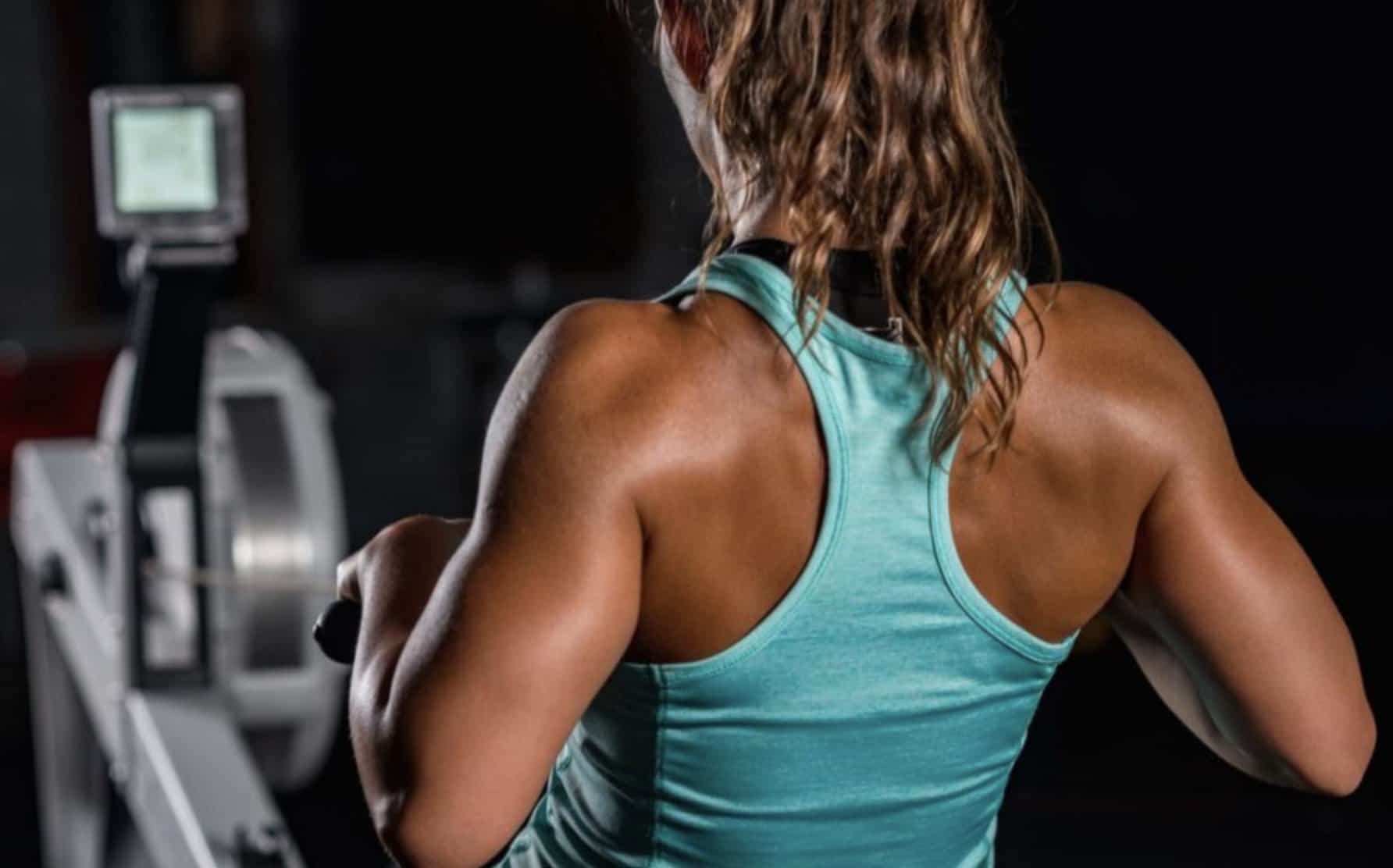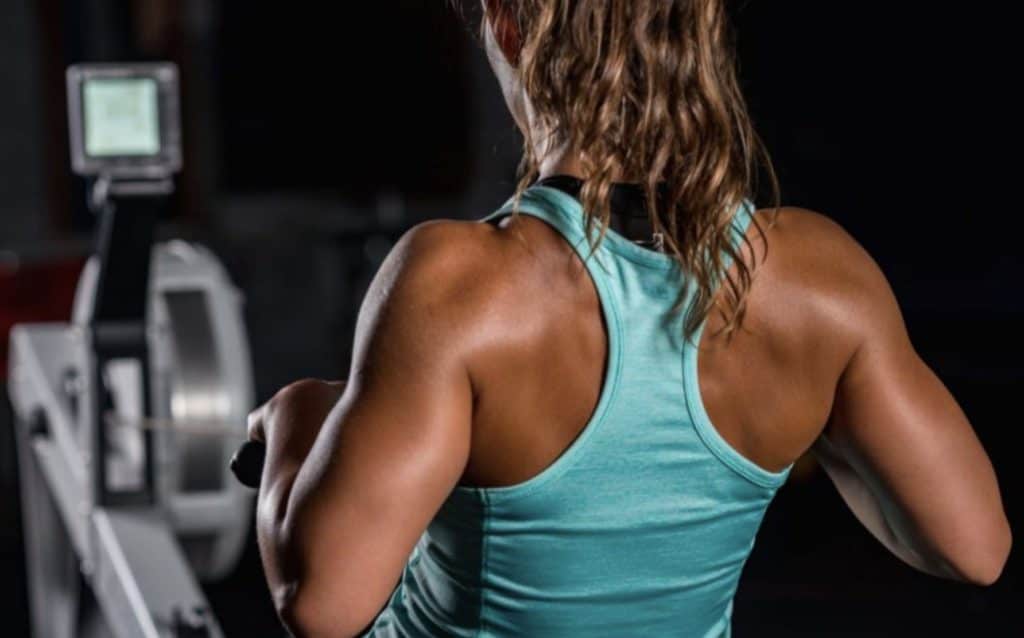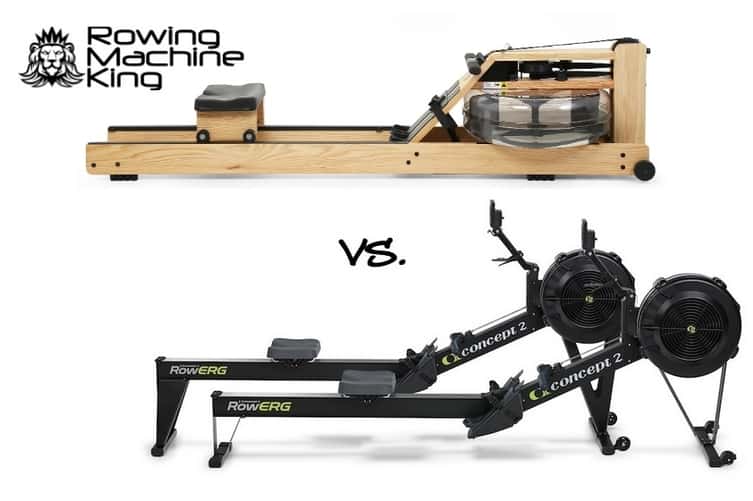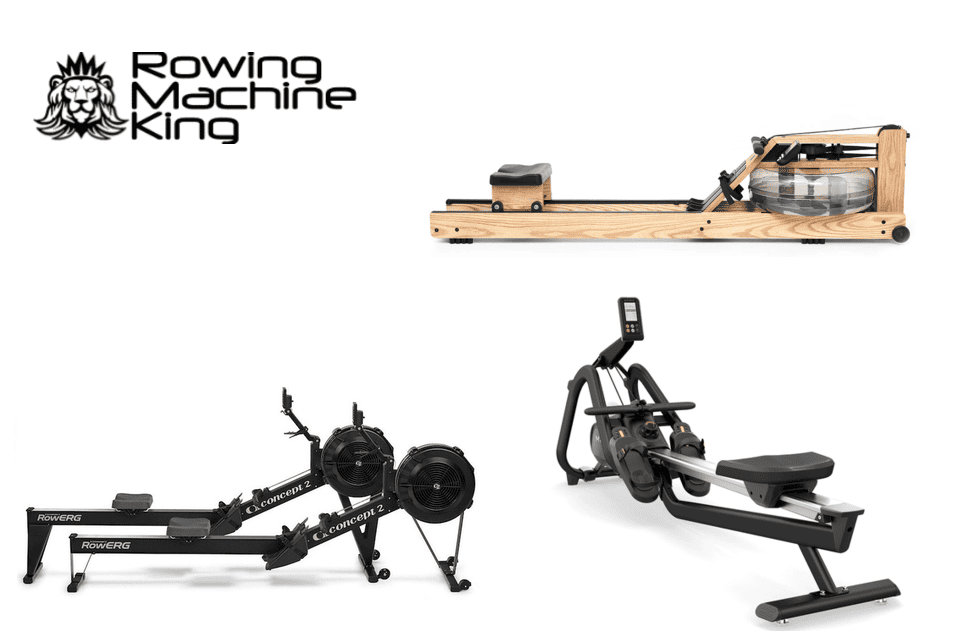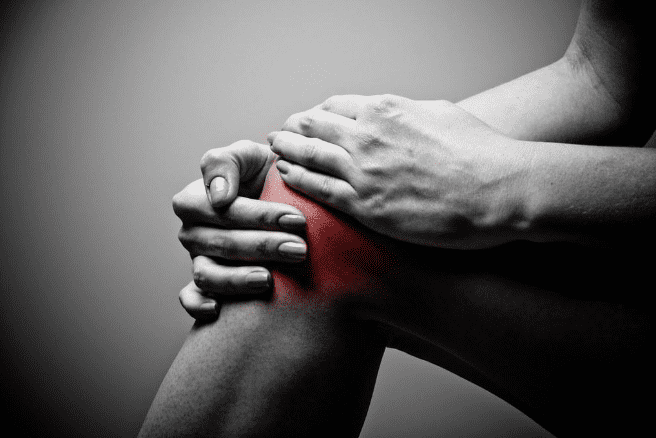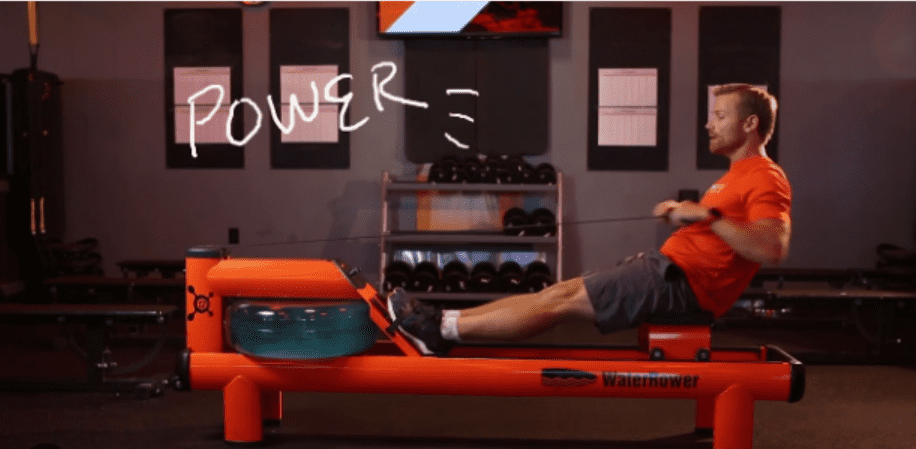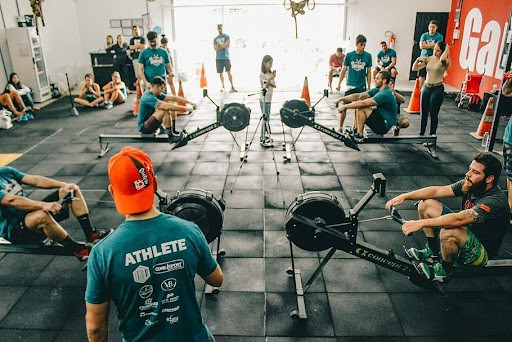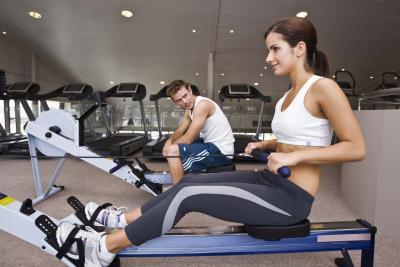Rowing isn’t just one of the best forms of exercise; it’s also one of the oldest in the world! This means rowing machine back pain has been around for a long time!
Really, for as long as there have been boats, people have been rowing them around. It’s only in modern times that rowing has progressed beyond a necessity to a sport and then to an at-home workout.
Like so many other forms of exercise, rowing can both cause back pain and exacerbate existing back pains. However, it can also alleviate pain and prevent it from happening!
Most of the time, I’ve found the pain is caused by poor form—as I’ll explain in depth below. In this article, I’m going to cover everything related to rowing machine back pain.
I’ll explain what it is and why you’re experiencing the pain during and after your rowing workout. Then I’ll give you some solutions on how you can tweak your posture and form to decrease pain. Finally, I’ll explain how your rowing can actually treat existing back pains.
At the end, I’ll give you a few of my personal favorite exercises and stretches that will strengthen your core, loosen up your spine, and reduce rowing machine back pain exponentially.
By the time you finish this article, you’ll know exactly what you need to do for a pain-free rowing machine workout every time!
What is Rowing Machine Back Pain?
The truth is that even the most experienced rowers will sometimes experience back pain (also known as lumbago) after an intense rowing workout. Typically, it will be the result of muscle fatigue or soreness, but sometimes the pain is a sign that something is “wrong” in your lower back (or upper back).
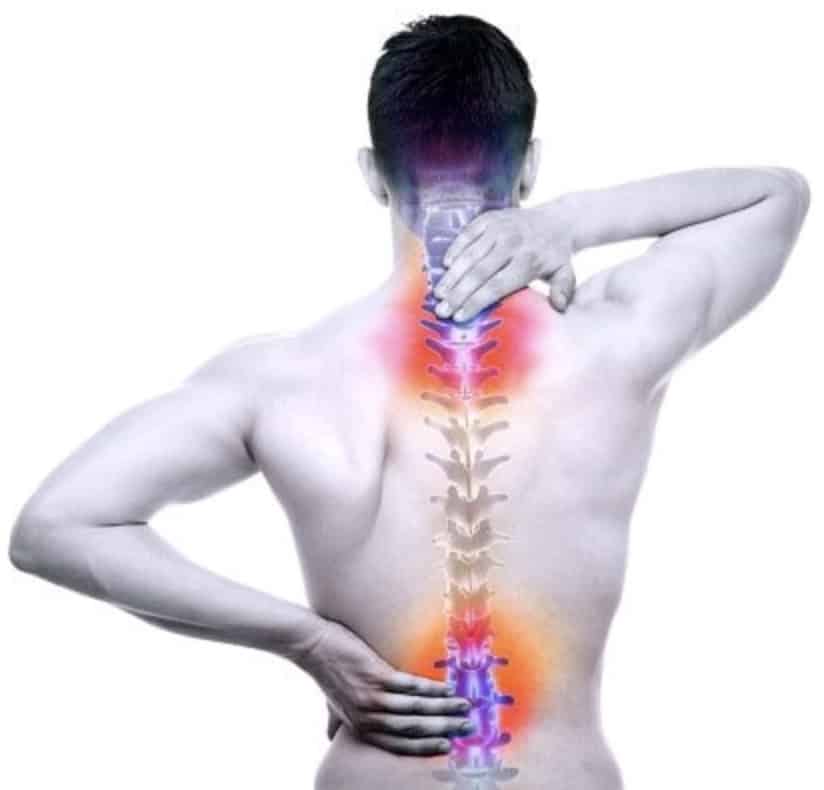
Most of the people (both experts and trainees) that I’ve talked to about rowing machine lower back pain describe it as one of the following sensations:
- Burning
- Throbbing, radiating pain in their lower back and leg
- Stiffness and tension in the muscles supporting their spine
- Sharp pain directly in their spinal column
These are actually four different types of pain, and they can each be caused by different things—as I’ll discuss in the next section.
A majority of the time, people are overworking their muscles and all they need is rest. Basically, they buy a rowing machine after having not exercised in 2 years and try rowing 30min a day for 6 days a week. You’ll need to ease into rowing and give your body some time to build up strength.
What Does my Lower Back Pain Mean?
Some of the examples below are more serious than others, but this is not meant to scare you. A majority of rowers, as I explained above, are just using improper form or overworking their muscles.
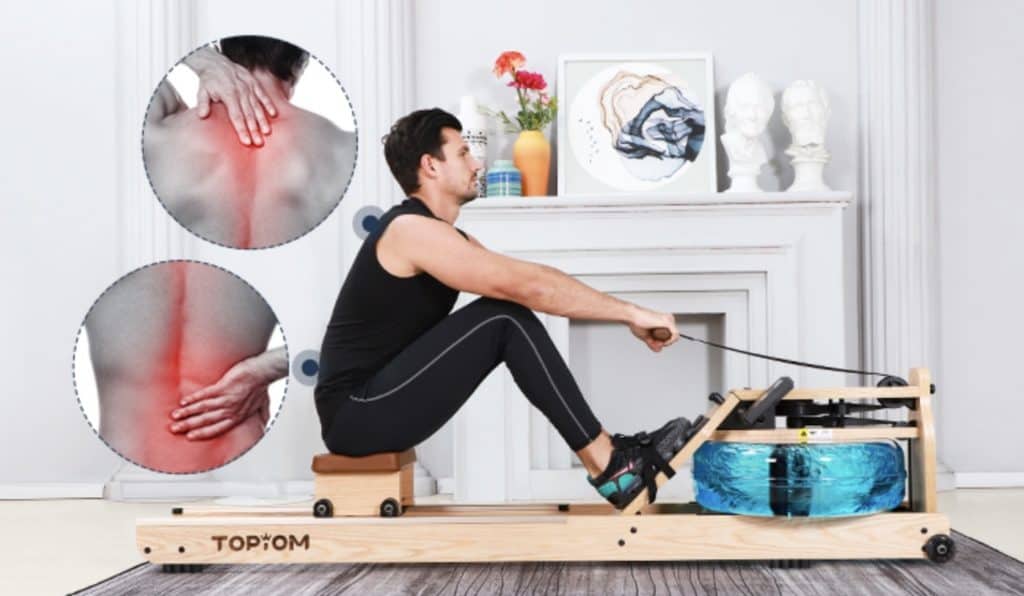
Below are the different types of pain and what they COULD mean. I am not a doctor so please see one if you think there may be something seriously wrong.
Burning pain
Typically indicates some sort of nerve dysfunction. Maybe the nerves are misfiring, or there is inflammation in your spinal cord that is pressed on the nerve. People who suffer from fibromyalgia often experience this type of pain.
Nerve pain can be related to nerve problems, or they can be caused by inflammation or infection in your spine, or even autoimmune conditions (like fibromyalgia).
This is the sort of pain that requires a medical expert to treat. I highly recommend that you visit a doctor if you’re experiencing burning pain sensations before, during, or after your rowing workout.
Throbbing, radiating pain in your lower back and leg
Typically caused by sciatica. You’ll know it’s sciatica because it only affects one leg and one side of your back at a time.
Sciatica is the result of compression to the nerves in your spine. It may be caused by a herniated or slipped disc, or it might be due to spinal narrowing or bone spurs.
Whatever the case, you’ll know it’s sciatica because the pain will typically radiate from your lower back down as far as your knee. It may also feel like “shooting” pain or “throbbing” pain.
But the fact that it extends from your lower back down the back of your leg indicates that it’s likely sciatica. This is definitely another form of back pain that you should see a doctor about!
Sharp pain directly in or beside your spinal column
Usually caused by a slipped or herniated disc, or a muscle spasm. You’ll definitely know that it’s one of these things because you’ll feel a sort of “ripple” of very sharp pain in a specific part of your back, and your body will instinctively twist or hunch to protect the sudden misalignment in your spine or weakened muscle.
If you experience this type of pain while rowing, stop immediately and treat the injury with hot and cold packs, compression, and rest.
If you experienced this pain before or after your rowing session, the treatment remains the same, but I also recommend that you take a few days to rest before you try working out again.
The resulting pain, swelling, and stiffness is your body’s way of warning you that something is wrong before it gets too serious.
Stiffness and/or tension in your spinal muscles
Usually the result of fatigue. Maybe you pushed your body very hard the previous day so your back muscles are sore and stiff. You’ll feel like the muscles are tight every time you lean forward into your rowing motion.
The good news is that stiff, sore, and tense muscles can be easily treated at home, without the need for a doctor.
So what should you do if you feel this type of pain in your lower back?
Fix Your Rowing Machine Back Pain By:
The very first thing you should do is rest until the pain subsides. This can be anywhere from 1-2 weeks. Once you no longer have back pain, it’s time to start incorporating some of the recommendations below.
Stretching. Spending 5-10 minutes doing light static and dynamic stretches before any rowing workout. Make sure to do lots of bending, twisting stretches (see the final section on “Best Stretches to Combat Rowing Machine Back Pain”) that will limber up your spinal muscles.
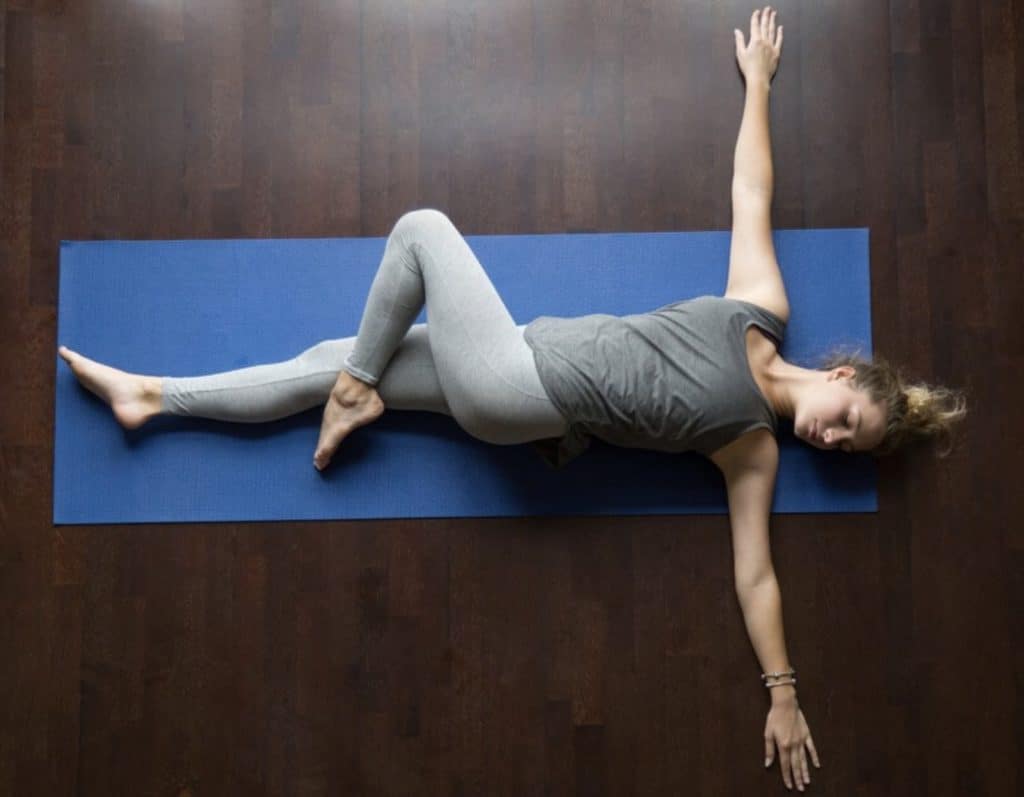
Stretching will elongate your spine and stretch out any stiff muscles, reducing tension and allowing you to move more easily.
Warming up with a walk or light exercise. If you’re experiencing back pain, I don’t recommend diving straight into the rowing workout. Instead, go for a short walk or light exercise (jog, jumping jacks, etc.)—no more than 10 to 15 minutes—to get your blood flowing and warm up your back muscles. Figure out what warm-up won’t aggravate your back. When the time comes to sit down and get rowing, you’ll be limber and ready to work.
Correct Your Form to Eliminate Back Pain
Remember how I mentioned that EVERYONE, even experienced rowers, will sometimes suffer from back pain?
For professionals and athletes, the pain will usually be the result of overwork, muscular fatigue, or a previous injury flaring up.
But for most gym-goers and at-home trainees, I find the rowing machine back pain is almost always the result of incorrect form done repetitively.
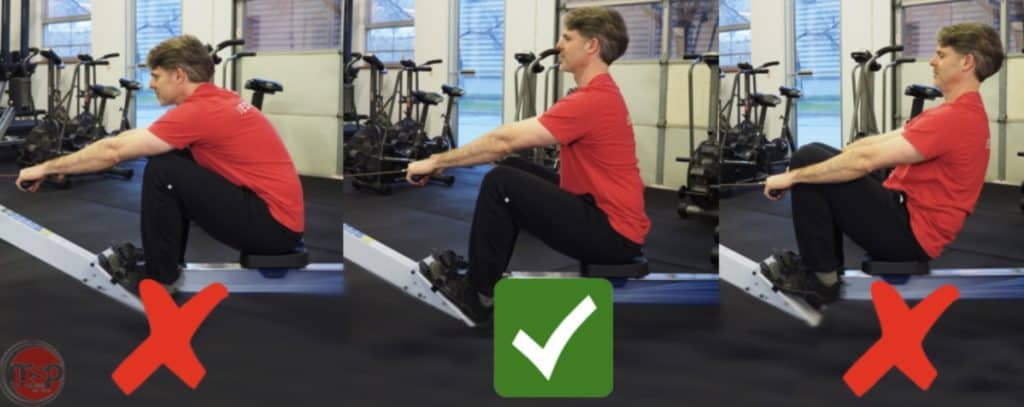
You see, your body is designed to move in a very specific combination of joint and muscle movements. If your form is correct, your entire musculoskeletal system will be aligned and work smoothly.
Unfortunately, people who are new to rowing often don’t know the correct form. They end up straining their joints or muscles because they move incorrectly.
I’ve found that it usually comes down to a few common form problems…
Common Form problems
- Hunching your back. If you sit up straight, your abdominals do a lot more of the work, together with both your lower and upper back. But if you hunch, you shift the focus almost exclusively onto your lower back, which increases the risk of strain, injury, and muscle fatigue.
- Leaning too far back. During the finish, some people lean too far back until they’re almost lying flat. This places more focus on the abdominals, but as your abs grow tired, your lower back engages to add extra support. The result: greater risk of back pain.
- Improper lower body movement. Your hips, knees, and ankles all should move in synchronous, fluid motion through the entire stroke. Unfortunately, muscular imbalances or weaknesses can throw off your lower body movements and lead to incorrect movements. Your lower back tries to compensate for these insufficiencies or imbalances, and you experience greater back pain the longer you row.
The good news is that there is a simple solution to these problems: just fix your form, and you’ll experience a lot less rowing machine back pain!
To correct your form, head over to my article on “Rowing Machine Muscles Used” and read exactly how your body should move through all four stages of a proper rowing stroke.
It’s a quick read, but it will change the way you move and drastically improve your posture to minimize upper & lower back pain.
You can also watch this video on proper rowing machine form:
The 5 Best Exercises to Combat Rowing Machine Back Pain
If you’ve already taken steps to correct your rowing form and you’re still feeling some pain, I highly recommend paying extra attention to your lower back and abdominal muscles.
Strengthening your core muscles will make them better at supporting your weight and maintaining proper posture throughout your rowing workout.
Here are my five favorite exercises to combat rowing machine lower back pain:
- Plank – The Plank and High Plank position are both amazing for strengthening your core (abs and back) muscles. They’re isometric exercises that don’t require any spinal movement, so they’re both excellent for both muscle growth and treating existing back pains.
- Good Mornings – Good Mornings focus on your lower back, hamstrings, and glutes, building a stronger posterior chain and facilitating easier, smoother movements when you row.
- Supermans – This lower back exercise fortifies your spinal muscles and develops strength using just your body weight.
- Lying Down Pelvic Tilts – This simple exercise engages your lower back, pelvis, and hips, training your lower core to move in unison.
- Dead Bug – This exercise strengthens your core muscles and protects your spine.
Incorporate these exercises into your weekly workout routines, and you’ll bulletproof your spine against rowing machine lower back pain.
The 5 Best Stretches to Combat Rowing Machine Back Pain
As I mentioned above, it’s a good idea to spend a few minutes stretching to loosen up your muscles before your workout. I like to do these five stretches before I start rowing:
- Forward Bend/Fold – This standing position loosens up your lower back, glutes, hamstrings, and hips, helping you to move through your full rowing stroke without tension in your lower body.
- Seated Forward Bend – Bending forward while seated doubles down on the effectiveness of the stretch, using the floor to provide resistance to let you sink lower and pull harder on the tight muscles.
- Triangle Pose – This movement works your lower back by bending to the side, limbering up your muscles and encouraging a better range of motion.
- Piriformis Stretch – This is one of my favorite physical therapy exercises, and it does wonders to loosen up muscle tension and ease any sciatica pain.
- Sphinx Pose – This is more than just a stretch; it’s also an excellent exercise to train your core strength!
Spend just 5 minutes before your workout doing these stretches—one minute each—and you’ll find you move more easily with far less pain.
Is A Rowing Machine Good for Back Pain Treatment?
Ergonomic rowers are actually an amazing tool for rehab following a back injury or lower back surgery. You’ll often see rowing machines (air & water) in rehab facilities.
It’s a low-impact form of exercise that is a lot easier on your joints and spine than workouts like running, cycling, or skating. Because of the focus on smooth, efficient movement through your entire body, I’ve discovered that it can do wonders to help restore a full, natural range of motion even for those with bad backs or recovering post-injury.
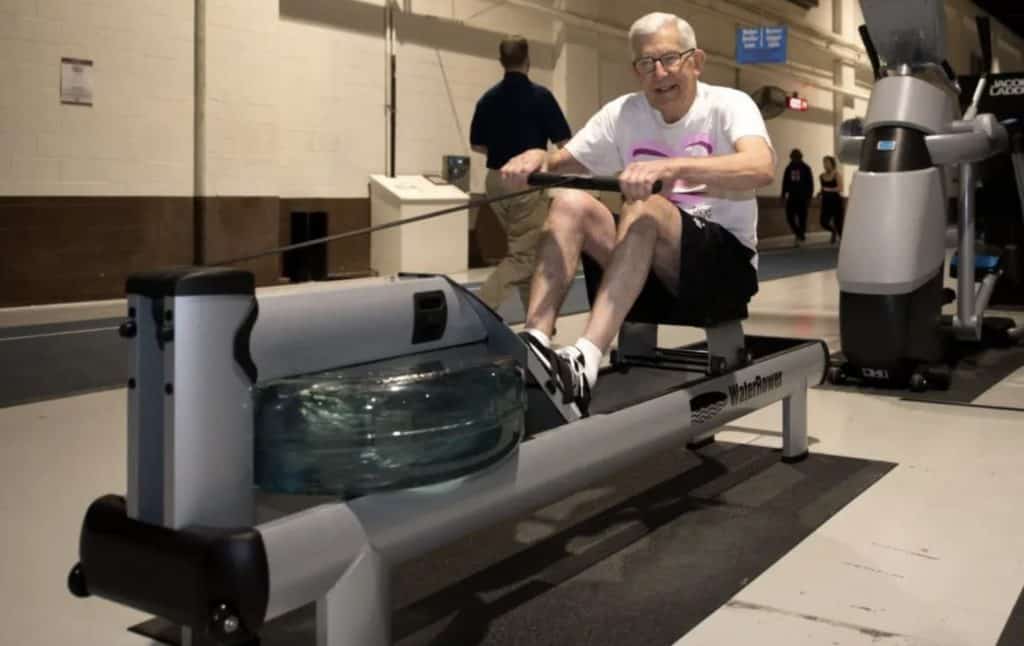
You see, rowing is a full-body workout that is constantly engaging your core. Your core is working to keep your arms and legs moving smoothly in tandem as you row. The more you row, the more you develop your core and the stronger your back and abdominal muscles will become.
And that’s pretty much what all physical therapy for lower back pain focuses on!
Your spinal muscles are there to support and protect your spinal column. If you have strong back muscles, your risk of back injury will be drastically decreased.
Rowing is more than just a therapy for back pain; it’s a preventative measure that will protect you against future injuries!
What Is Strength Training?
Also called resistance training, strength training is a body workout that uses opposing force to build strength in your muscles, thus making them stronger.
Since this workout builds your muscle mass, it makes you stronger with increased weight.
Also, it boosts bone mass, allowing you to be even stronger. If your goal is to boost your body strength, you want to include strength training in your workout routine at least twice weekly!
Even as you age, you want to do strength training as it maintains your acquired muscle and bone mass.
Does a Rowing Machine Serve as Strength Training?
Yes, rowing machines are excellent for strength training as they provide a full body workout.
Rowing might seem simple, but it works crucial muscles to give them sufficient strength.
So, if you need more strength in your lower body (like your legs), you want to equip your home gym with the best rowing machine.
Precisely, rowing machines activate a group of muscles in your lower and upper body and increase their mass and strength. When exercising with a rowing machine, you work your glutes hamstrings, and quadriceps in the lower body.
On the other hand, crucial muscles in your upper body, such as the deltoidsand lats, also benefit from the total body workout of a rowing machine.
But that’s not all –with the rowing machine engaging your core muscles, specifically your abdominal muscles, you will have the coveted, defined abdominal aesthetics.
Since rowing machines activate crucial body muscles at once, they increase body strength in crucial parts, allowing you to boost your overall body strength.
Therefore, rowing machines are the gym equipment you need for strength training.
However, you want to use your rowing machine while maintaining proper rowing form to reap the maximum benefits.
Does a Rowing Machine Prevent Back Pain?
Yes, a rowing machine could prevent back pain if you use it to train at least 4 days a weekwhile maintaining the correct rowing techniques.
One thing with rowing machines is that they provide high-intensity workouts to multiple body muscle groups.
With that in mind, these incredible full body workout machines also work the muscle groups in your back.
A single rowing stroke does more than exercise the muscles in your lower body and abdomen; also, it works the upper back muscles, making them stronger and well-defined.
Since a rowing machine has a postural aspect as it works the upper back muscle, it can improve the upper spine posture.
Thus alleviating your back pain from hunching over computer screens when working from home.
Therefore, using a rowing machine leads to a pain free back as it corrects the spine in the upper back.
What Phases Does a Rowing Machine Have?
A rowing machine has 4 phases to train various muscle groups in your body. Each phase works muscles in a particular part of your body.
So, it is good you know these phases and the rowing techniques that work various muscles in your body:
Phase 1, The Catch
Of course, this is the first phase; it requires you to slide forward with your rowing machine seat. When performing this motion, you want to bend your knees up with the knees close to your chest. Also, you want to keep your shins vertically; this allows you to position yourself closer to the front of the rowing machine. However, do not over-compress the knees or you could cause some rowing machine knee pain.
Most people think this phase does nothing. But it actually works your triceps, legs, and back muscles. You will use your triceps to extend your arms forward to grab the handlebar.
As a result, you will work your triceps. And this is how the catch exercises your triceps.
At the same time, you will engage your glutes hamstrings, and calf muscles when holding up your shins vertically.
Therefore, the rowing machine also works your legs in this phase. Finally, the latissimus dorsi muscles in your back also activate and gain strength.
With this muscle group controlling the extension of your arms, the latissimus dorsi muscles improve your arm and elbow movements, which helps you perform this range of motion excellently.
Additionally, your rowing machine works the trapezius muscles in this phase. Since these muscles control your shoulder blades, they help improve the definition of your shoulders as they also make your shoulders stronger.
And lastly, this phase ensures your rhomboids have enough strength to support the trapezius. Therefore, a rowing machine in this phase will benefit your back, legs, and triceps.
Phase 2, The Drive
This is the second phase of each rowing stroke. In this motion, you want to stretch your legs, pushing your feet against the foot stretchers. But you want to stop when your legs almost extend fully.
At the same time, you want to adjust your body upright. But this means you will engage your core muscles and use your hip hinge. Once in this upright position, you want to pull the handlebar back to your rib cage with strength from your shoulders, arms, and back.
However, you want to complete these steps in a single motion.
Once again, you will exercise your legs. Specifically, you will engage your glutes hamstrings, thus strengthening these muscles.
But this phase differs from the first one since it works your abs when you pull the handlebar to your rib cage.
Also, it works your biceps when pulling the handlebar towards your lower ribs. The lower and upper back muscles also get the exercise they need. As a result, you will have a stabilized torso.
Lastly, you will exercise your shoulders since sliding back along the rail allows your shoulders to contract. Therefore, you can achieve a full body rowing machine workout using the best machine.
Phase 3, The Finish
The finish is the third phase of each rowing stroke. You want to extend your legs fully in this third phase. But first, you will stabilize your body by engaging the muscles in your core and slightly hinging yourself backward at the hip – this will allow you to gain momentum.
And it is this momentum that you will need to extend your legs fully and pull the handlebar to your sternum. Since your arms rotate internally in this stage, they stimulate a rowing motion.
So, What Muscles Does the Third Phase Work?
First, this phase stabilizes the torso; it activates all the five muscles making up the torso: transversus abdominis, rectus abdominis, pyramidalis, internal abdominal oblique, and external abdominal oblique.
Second, it stabilizes your biceps since it works these muscles; your biceps contract to ensure you have stable back muscles. Therefore, the rowing machine also works your torso and biceps in this stage.
Phase 4, The Recovery
This is the final phase of each rowing stroke. And as the final phase, this stage takes you through the first three phases but in reverse. So, you will begin with your arms stretched out in front toward the flywheel; this keeps your arms held horizontally from the ground.
Then you want to hinge towards the front at the hips and bend your knees to pull yourself forward. You will use your hamstrings to pull yourself forward.
The forward motion will stop only when you’ve reached the starting phase: the catch.
Besides working the triceps, this motion exercises your upper leg muscles, such as the hamstring glutes and calves.
Additionally, the recovery phase, alongside the first three phases, uses the muscles in your neck, hands, and chest.
Since a rowing machine uses many muscle groups, it provides full body training.
Therefore, you can train your entire body after a rowing session.
Can You Feel Pain While Rowing?
Yes, you could feel back pain while rowing using bad rowing techniques.
Although rowing improves your muscles and reduces back pain, bad rowing techniques could only worsen your back pain.
Specifically, an uncoordinated range of motion can be your biggest undoing as it can injure your lower back.
So, you want to use coordinated rowing motion to improve your physique and alleviate your back pain.
Final Thoughts
Rowing machine back pain doesn’t have to put your workouts on hold! Well, unless you need to rest for a week or two to heal.
Recognizing the cause of the back pain is just the first step; using the information above, you can actively correct the problem to restore full, smooth function to your lower back and totally eliminate pain.
Hopefully, you found the information useful, and it helps you to address whatever culprit is the source of your back pain.
If you are looking for a smooth rowing stroke, I recommend using an air or water rower. The two best models/brands on the market are:
- Concept2 Model D Indoor Rowing Machine
- WaterRower Club Indoor Rower (a lot of WaterRower options available)
If you have any questions or need help, feel free to drop a comment below and I’ll happily answer as soon as I can.
Cheers to a pain-free workout!

